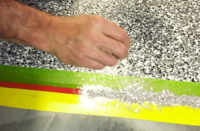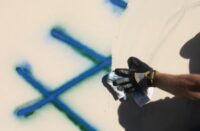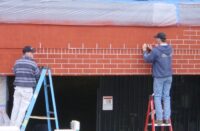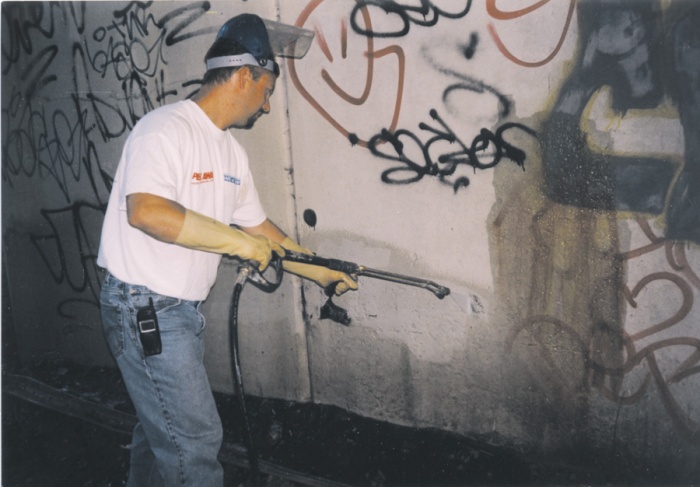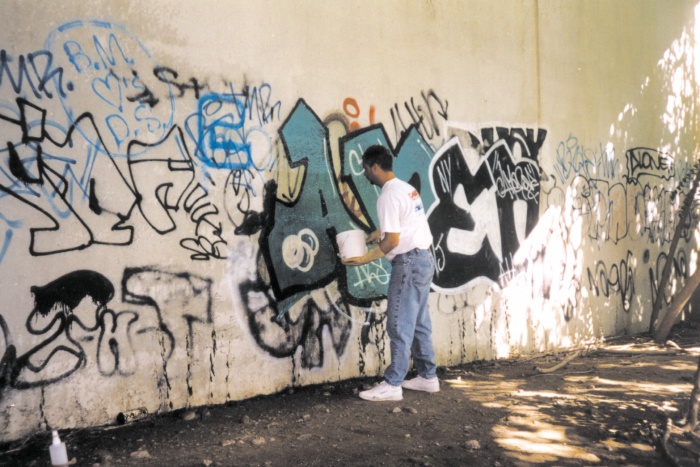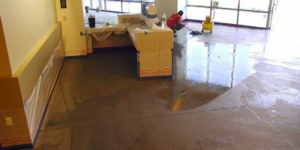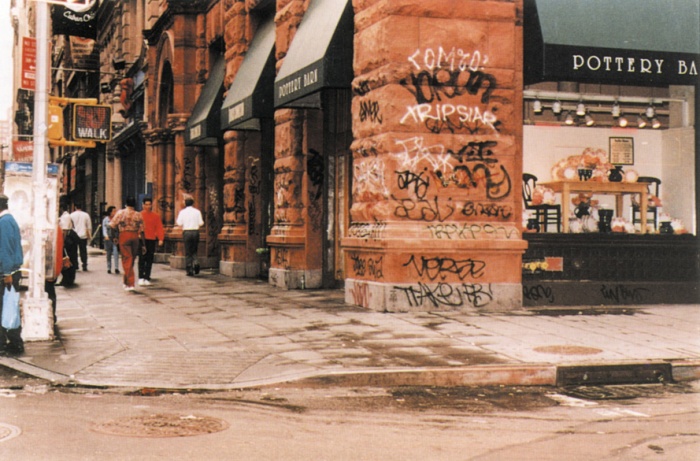 |
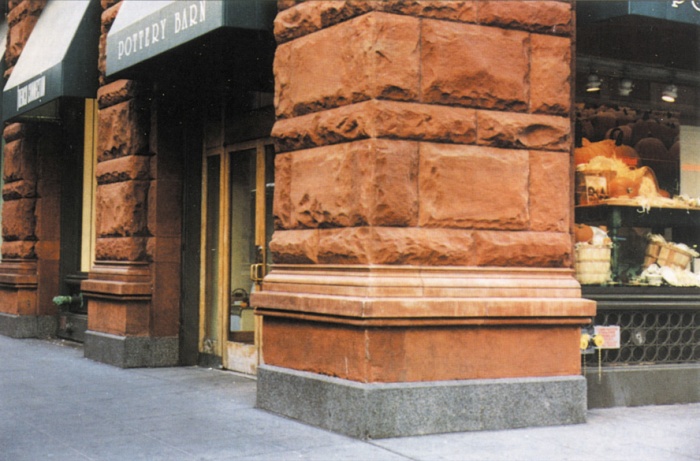 |
You can’t guarantee that taggers won’t mar your work, but there are protective coatings for graffiti removal you can use to make cleanup easier.
A concrete contractor uses stains, washes, paint and textures to give a unique, personal touch to a bare concrete wall. A tagger uses graffiti to do the same thing.
The most important difference is permission, or the lack of it. Decorative concrete contractors work where they’re wanted. Taggers crave working where they’re not wanted. Sometimes, in fact, they’ll put their work right on top of a contractor’s.
Decorative concrete will not deter taggers, says Barry Woods, president of Graffiti Control Systems, a Los Angeles contractor. “These guys don’t think like that. They hit murals. They hit churches.”
A wall that is hard to reach or unique in any way, such as one with a decorative design, can even be considered a challenge, he says. “They may vandalize it just for the sheer notoriety.”
This presents a problem for legitimate artists. How does a concrete contractor protect work from being scarred or obliterated by graffiti?
The answer comes in two parts. Obviously, chemicals must be used to clean the tag off the wall. But even before that, many contractors seal their work with an anti-graffiti coating to make cleanup easier.
Should you coat decorative concrete work? If it is in a high-risk area, yes, Woods says. “If there is other tagging in the neighborhood, you want to protect it.”
Waging war
The most effective way to keep a wall free of tags is to build that wall in a neighborhood that is well-off and graffiti-free. The second most effective method is to remove every tag immediately.
“The way to wage war against graffiti is to not let it stay up,” says Nanette Schwartz, president of Genesis Coatings Inc. “The only thing that stops it is persistently wiping it off. You can’t let graffiti sit for days. It’s like a fungus. It grows.”
Other anti-graffiti specialists agree. “Once somebody sees a tag, they put their tag right next to it,” says Drew Lindner, managing partner at Graffiti Master Products. “It just blossoms.”
Hy Dubin, president of Dumond Chemicals Inc., says the trick is to show you can take it off as easy as taggers can put it on. “Then they will go around the corner and bother somebody else and not bother you anymore.”
If you let graffiti dry and cure, it’s a lot harder to remove, notes Larry Ratliff, a California-based independent salesman who represents Genesis Coatings and Dumond Chemicals. “If an area is going to be tagged, it doesn’t matter if it’s decorative, painted or whatever. It’s a gang-related challenge for them to tag anything and everything in their territory.”
Often, building managers and maintenance crews find that the cheapest response to graffiti is repainting. Ivy and other plants keep graffiti from view by obscuring the wall. But neither option will work for decorative concrete.
In any case, adjusting the look of a building to fight graffiti amounts to giving in, Schwartz says. “Any change takes away from the integrity of the architectural design. I should not have to sacrifice the integrity of the look of the building.”
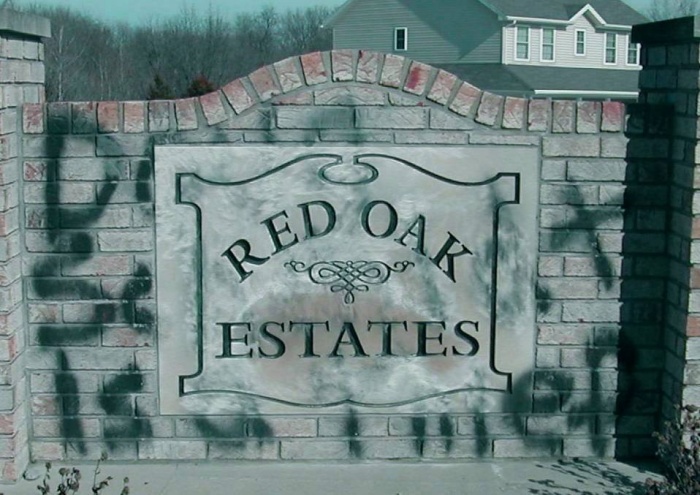 |
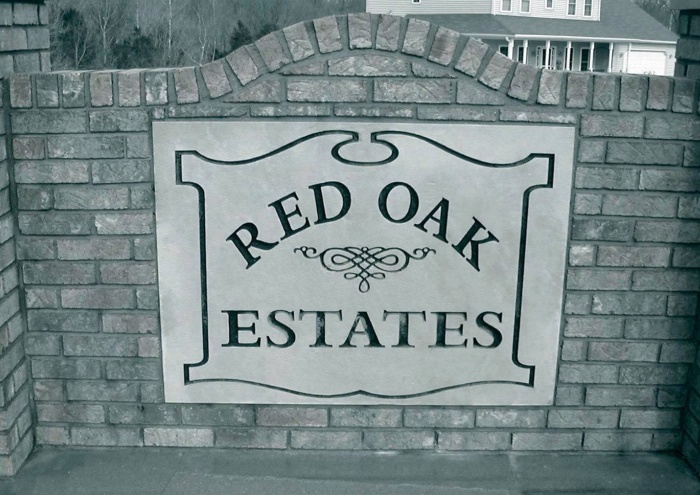 |
Preventative coatings
If graffiti will be a common threat to a decorative wall, a special anti-graffiti sealer will protect the work, both from spray paint and from the removers that dissolve it.
Preventative anti-graffiti coatings are divided into two categories.
“Sacrificial” coatings come off the wall, taking spray paint with them, when blasted with hot water from a pressure washer. Sacrificial coatings can be silicone but are often wax-based. Using them is like “like putting floor wax on the wall,” Lindner says. After the graffiti-stained coating is peeled from the wall, a fresh coat is applied.
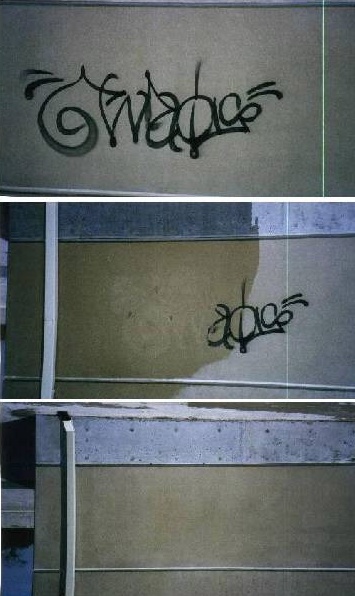 Permanent or “nonsacrificial” coatings are usually epoxies, polyurethanes or urethanes, and they stand up to cleaning solvents. “A cleaner is strong enough to break up dyes of paint, but not strong enough to attack the permanent coating,” Lindner says.
Permanent or “nonsacrificial” coatings are usually epoxies, polyurethanes or urethanes, and they stand up to cleaning solvents. “A cleaner is strong enough to break up dyes of paint, but not strong enough to attack the permanent coating,” Lindner says.
Permanent coatings are more expensive to install but less expensive to maintain, Woods explains.
With a permanent coating, an in-house janitor can easily do the cleanups. You must scour sacrificial coatings off with a hot-water pressure wash, something that is outside the scope of regular janitorial work.
What’s more, sacrificial coatings leave a wet, steamy mess when removed, which limits their use indoors.
Mike Zink, chemist with Okon Inc., which makes Graffiti Solutions, says that based on what he knows about his company’s products, he prefers sacrificial coatings. They are less filmy on a wall than nonsacrificials, he says, and they are cheaper. “Putting up another layer is just a matter of some time invested,” he says.
Also, many permanent coatings aren’t truly permanent. Depending on how often tagging occurs, you have to reapply many of them after either five or 10 years. “Nonsacrificials do wear, but it takes a long time, depending on how thick you put it on,” says Ratliff. You get quite a few washes on those.”
Another important question for decorative contractors is whether a coating will dull or change the meticulously crafted effects underneath.
A coating with a matte finish will look better than a glossy coating on a natural stone effect. “All anti-graffiti coatings are pretty much water white clear,” says Ratliff. “But graffiti coatings tend to be high gloss.”
Dumond’s two-component polyurethane coating leaves a satin-type finish. Lindner of Graffiti Master, for his part, says to expect a slight satin sheen. “You will be able to tell something’s there,” he says.
Any visible coat of sealer may pose aesthetic problems. In many cases, you do not apply anti-graffiti sealer to the entire wall. Instead, you may want to use it only on parts that taggers might reach.
Lindner says the visible presence of anti-graffiti coating sometimes works as a deterrent. “The kids will see there’s something there protecting it.”
But Schwartz disagrees. A “loud statement” that a business is fighting back against graffiti may provoke taggers to try harder to vandalize a building, she says. “The whole thing about graffiti is that you DON’T want to make it known that you’re protecting it. These are not reasonable people. They will just aggravate you.”
Removal
Often, cleanup comes before preventative coating, says Schwartz of Genesis. “One does not think one has a graffiti problem until one actually gets graffiti.”
If the remover reacts with anything on the wall, the damage will then be irreversible. And any solvent that dissolves spray paint will attack any paint on the wall. “Removers don’t have brains,” Schwartz warns.
Removers come in aerosol or liquid form. They also come in different strengths. Graffiti Master Products, for example, makes three cleaners: an alcohol-based cleaner for bus stops and car finishes, a multipurpose NMP-based cleaner that will remove small tags from painted surfaces, and a potassium hydroxide cleaner for uncoated brick, concrete and masonry walls.
The user may need a brush to scrape residual traces of spray paint out of the crevices of a concrete wall, Lindner says. If the surface is smooth, then you will not need a brush.
Looking for anti-graffiti protective coatings?
Offered by Concrete Decor Store VandlGuard Original Non-Sacrificial Anti-Graffiti Coating - Concentrate
VandlGuard Original Non-Sacrificial Anti-Graffiti Coating - Concentrate
by Rain Guard Pro VandlTop Sacrificial Anti-Graffiti Coating
VandlTop Sacrificial Anti-Graffiti Coating
by Rain Guard Pro
